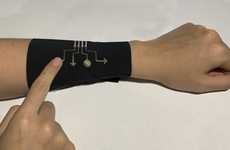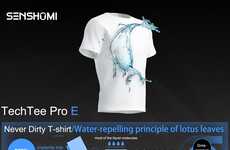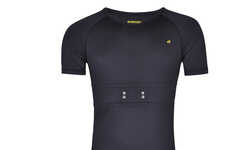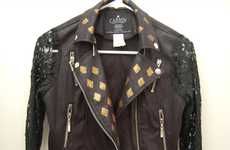
Stanford Studies Are First Step Towards Gadgets Becoming Our Clothes
Brian G Randles — January 23, 2010 — Tech
References: blog.ruderetro & treehugger
We all know the important place nanotechnology will have in the future. All of the gadgets we have now are incredible smaller, faster and smarter than their predecessors.
Now researchers at Stanford University have started researching nanotech tees and “how carbon nanotubes can be used to create thin, flexible batteries. They’ve moved on from paper and ink to cotton and polyester… the research team is bringing us closer to having wearable electronics and conductive fabrics.”
This sounds too cool. I don’t know about you, but I think blasting some Rolling Stones while wearing their vintage tour t-shirt would be pretty amazing. Check out more on battery-powered and nanotech tees, as well as the technology behind them, by following the links below.
Now researchers at Stanford University have started researching nanotech tees and “how carbon nanotubes can be used to create thin, flexible batteries. They’ve moved on from paper and ink to cotton and polyester… the research team is bringing us closer to having wearable electronics and conductive fabrics.”
This sounds too cool. I don’t know about you, but I think blasting some Rolling Stones while wearing their vintage tour t-shirt would be pretty amazing. Check out more on battery-powered and nanotech tees, as well as the technology behind them, by following the links below.
Trend Themes
1. Nanotech Textiles - The fusion of nanotechnology and textiles to create wearable electronics and conductive fabrics.
2. Flexible Batteries - Exploring the use of carbon nanotubes to create thin and flexible batteries for wearable electronics.
3. Conductive Fibers - Researching the use of cotton and polyester fibers with carbon nanotubes to create conductive fabrics for wearable electronics.
Industry Implications
1. Fashion - Opportunity for fashion designers and clothing companies to incorporate wearable electronics and conductive fabrics into their products.
2. Consumer Electronics - Potential innovation in the development of battery-powered and wearable electronic devices.
3. Textile Manufacturing - The integration of nanotechnology into textile manufacturing processes for the creation of conductive fabrics and other innovative clothing materials.
3.5
Score
Popularity
Activity
Freshness























